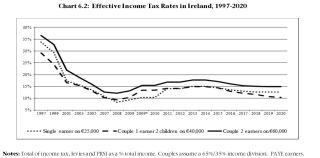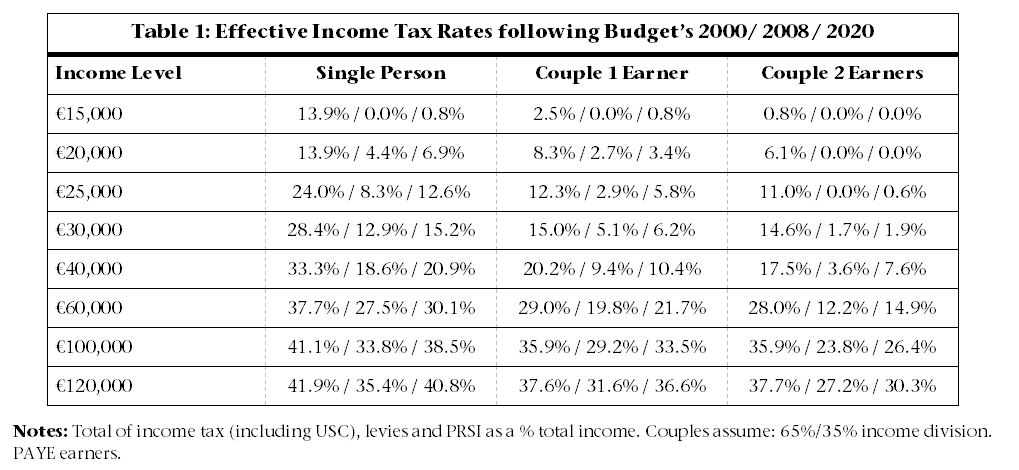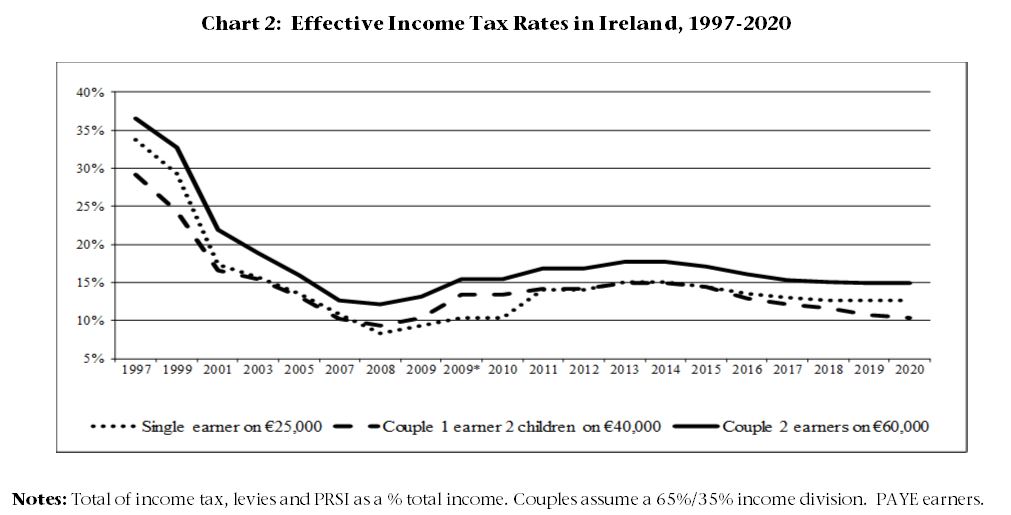Effective income tax rates in Ireland over time

Budget 2021 is just six weeks away. Government has a number of options for increasing or reducing revenue, and increasing or reducing expenditure. Income tax is a very significant area of revenue-raising, typically providing between a quarter and a third of all government revenue.
Today we examine some trends in effective income tax rates in Ireland over the last two decades.
These rates are calculated by comparing the total amount of income tax a person pays with their pre-tax income. For example, a person earning €50,000 who pays €10,000 in taxation (after all their credits and allowances) will have an effective tax rate of 20 per cent. Calculating the scale of income taxation in this way provides a more accurate reflection of the scale of income taxation faced by earners.
We have calculated effective tax rates for a single person, a single income couple with two children and a couple with two earners. Table 1 presents the results of this analysis. For comparative purposes, it also presents the effective tax rates which existed for people with the same income levels in 2000 and 2008.
Following Budget 2020, for a single person with an income of €15,000 the effective tax rate will be 0.8 per cent, rising to 12.6 per cent of an income of €25,000 and 40.8 per cent of an income of €120,000. A single income couple will have an effective tax rate of 0.8 per cent at an income of €15,000, rising to 5.8 per cent at an income of €25,000, 21.7 per cent at an income of €60,000 and 36.6 per cent at an income of €120,000. In the case of a couple where both are earning and their combined income is €40,000 their effective tax rate is 7.6 per cent, rising to 30.3 per cent for combined earnings of €120,000.

As Chat 2, below, shows, despite increases during the recent economic crisis, these effective tax rates have decreased considerably over the past two decades for all earners.

Our calculations do not include any changes to other welfare allowances and secondary benefits as these payments do not flow to all households. Similarly, we have not included changes to other taxes (including indirect taxes and property taxes) as these are experienced differently by different households.